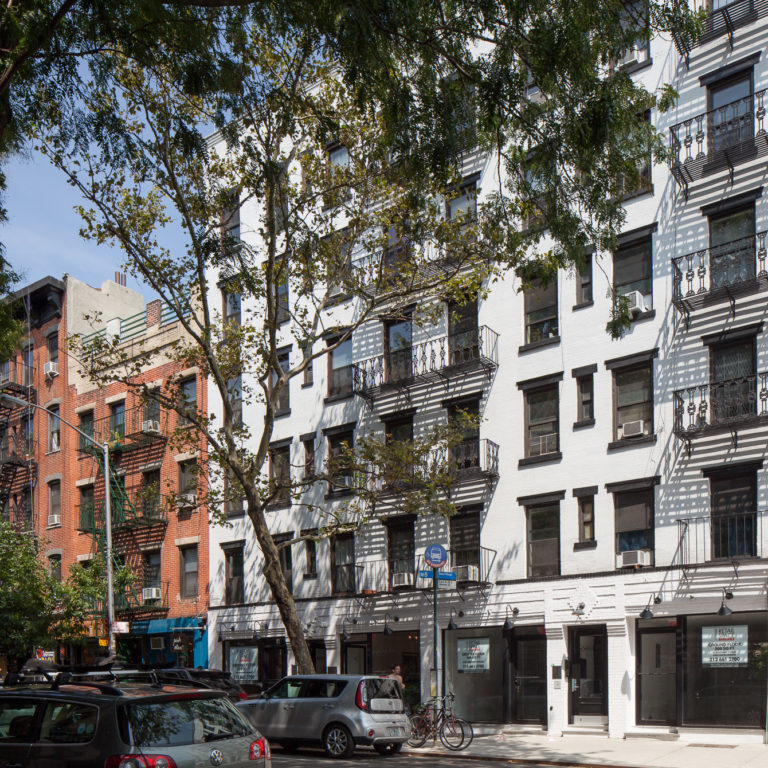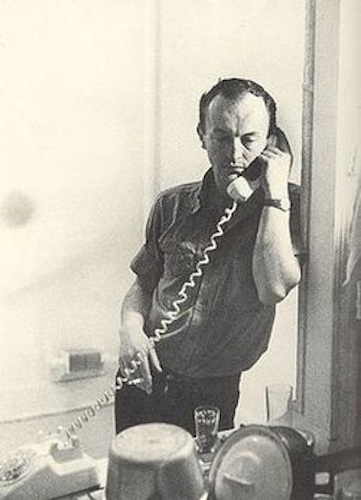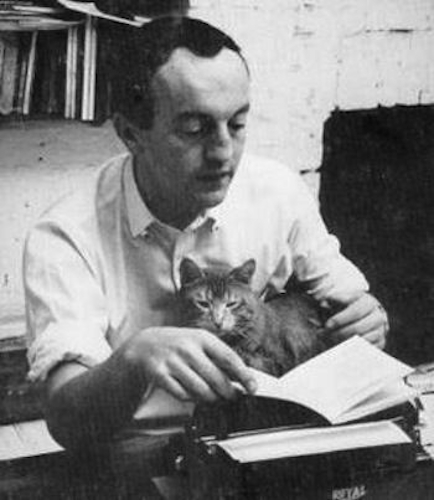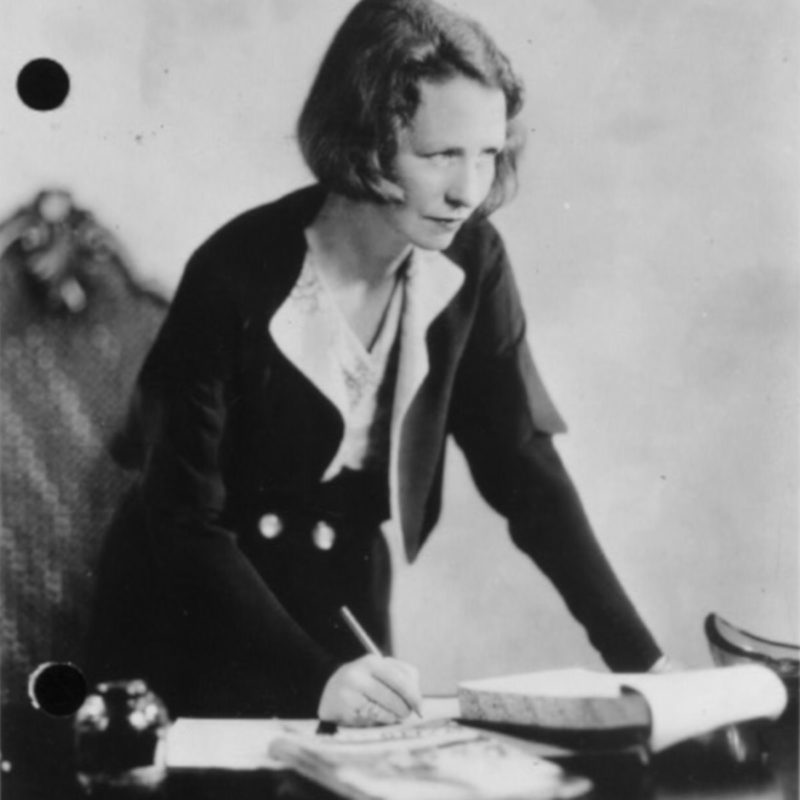
Frank O’Hara Residence
overview
The poet Frank O’Hara lived at this address with his on-again, off-again lover Joe LeSueur from 1959 to 1963.
Buildings of the East Village neighborhood surrounding O’Hara’s apartment are featured prominently in several of his poems.
History
Frank O’Hara (1926-1966) was an American poet and leader of the New York School of poets whose work first gained widespread recognition after it was included in The New American Poetry (1945-1960), an anthology published in 1960. He gained further recognition after the 1965 publication of his influential book Lunch Poems. He also published Love Poems (Tentative Title) that same year, which he had written in 1961. Many were inspired by Vincent Warren, a ballet dancer and O’Hara’s longtime partner.
O’Hara met Joe LeSueur at a party in 1951. Four years later, in 1955, “they moved in together without ceremony,” and lived in several apartments in New York City before settling in to one at 441 East 9th Street in 1959. LaSueur credits O’Hara’s relationship with Warren for inspiring some of his most evocative poems, writing that “they are among Frank’s finest works, and the poems I find most moving.”
O’Hara references several locations around their East 9th Street apartment in his poems. The titles “Avenue A” and “Second Avenue” refer to nearby streets in the East Village. “The Day the Lady Died” includes a mention of the 5 Spot, an East Village jazz club. His poem “Early on Sunday” brings the reader’s attention to St. Brigid’s Church, at the corner of Avenue B and East 7th Street, which O’Hara could see from his apartment window. He wrote some of his most prominent works in his East 9th Street apartment, including all but one poem of Lunch Poems (1965), the entirety of Love Poems (Tentative Title) (1965), and his poem “Biotherm.”
He typed his poems on the kitchen table, up there on the second floor between the first and second window, accompanied periodically by the din of the Ninth St. crosstown bus.
O’Hara was a prolific writer, and was known for stuffing poems written on scraps of paper into kitchen drawers, boxes, and elsewhere around his apartment.
In 1966, O’Hara died suddenly at the age of 40 after being run over by a beach taxi on Fire Island.
Entry by Sarah Sargent, project consultant (June 2019).
NOTE: Names above in bold indicate LGBT people.
Building Information
- Architect or Builder: Unknown
- Year Built: 1852-53
Sources
Andrew Epstein, “Vincent Warren, Love of Frank O’Hara’s Life, Passes Away at 79”, November 11, 2017, http://bit.ly/2ZLrRr4
Chelsea Dowell, “Frank O’Hara’s East Village,” Off the Grid, June 8, 2017, bit.ly/2WVEttY.
Frank O’Hara,” Poetry Foundation, n.d., bit.ly/2WSU9mm.
Heather Dubun, “Where Poet Frank O’Hara was Prolific, a New Plaque,” The Villager, July 3, 2014, bit.ly/2ZxNKd6. [source of pull quote]
Morgan Meis, “A Queer Thing: The U.S. Examines Gay Identity Through Its Portraits,” November 16, 2010, bit.ly/2ZwL67E.
Do you have more information about this site?
This project is enriched by your participation! Do you have your own images of this site? Or a story to share? Would you like to suggest a different historic site?


